Popular games published by company Atari Games
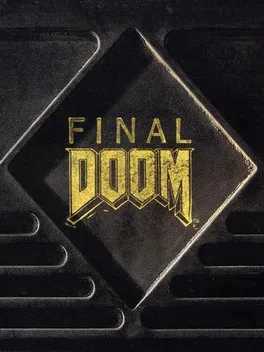
Final Doom is a compilation of two standalone episodes: TNT: Evilution and The Plutonia Experiment, which include full sets of new levels (both of them use the same level structure as Doom II with 30 regular levels and 2 secret levels), new graphics and textures, and new text interlude screens in addition to most of the resources from Doom II and some from Doom.
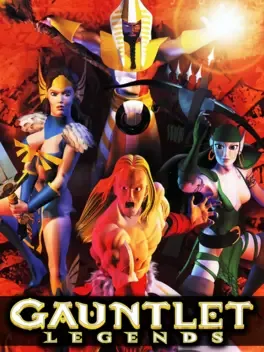
Gauntlet Legends is an arcade game released in 1998 by Atari Games. It is a fantasy themed hack and slash styled dungeon crawl game, a sequel to 1985's popular Gauntlet and 1986's Gauntlet II and marks the final game in the series to be produced by Atari Games. Its unusual features for an arcade game included passwords and characters that could be saved, enabling players to play over the course of a long period.
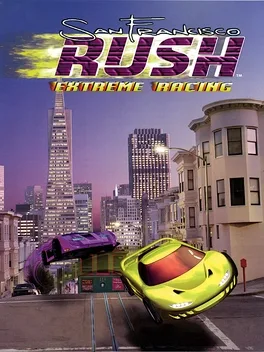
San Francisco Rush: Extreme Racing is the first game in the Rush series. Tne N64 version contains six regular tracks and two hidden tracks. The regular tracks can be run in either reverse or mirrored modes and feature added collectible hidden keys throughout the track that can be used to unlock hidden vehicles. It also contains a Practice Mode and a Death Race mode where the game ends if the player crashes. The N64 port of Rush also includes a Circuit Mode and a save system for Fast Times, circuit progress, and hidden keys that the player can find on secret spots to unlock new cars.
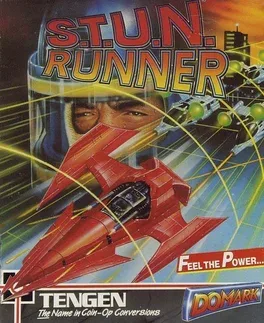
You are a S.T.U.N. Runner doing time trials. Shoot or avoid other vehicles that hinder you while driving the optimal path for best speed. The Shockwave will destroy all adversaries on the screen and the Boost pads give you invulnerability while increasing your speed.

The players, up to four at once in the arcade version, select among four playable fantasy-based characters; Thor the Warrior, Merlin the Wizard, Thyra the Valkyrie, or Questor the Elf. Each character has his or her own unique strength and weaknesses. For example, the Warrior is strongest in hand-to-hand combat, the Wizard has the most powerful magic, the Valkyrie has the best armour and the Elf is the fastest in movement. Upon selecting a playable character, the gameplay is set within a series of top-down, third-person perspective mazes where the object is to find and touch the designated exit in every level. An assortment of special items can be located in each level that increase player's character's health, unlock doors, gain more points and magical potions that can destroy all of the enemies on screen. The enemies are an assortment of fantasy-based monsters, including ghosts, grunts, demons, lobbers, sorcerers and thieves. Each enters the level through specific generators, which can be destroyed. While there are no bosses in the game, the most dangerous enemy is "Death", who can not only drain a character's health, but is difficult to destroy. As the game progresses, higher levels of skill are needed to reach the exit, with success often depending on the willingness of the players to cooperate by sharing food and luring monsters into places where they can be engaged and slaughtered more conveniently. While contact with enemies reduces the player's health, it also slowly drains on its own, thus creating a time limit. When a character's health reaches zero, that character dies. The character can be revived in place with full health by spending a game credit (i.e. inserting a coin) within a certain short time window after it died. This allows even the least proficient players to keep playing indefinitely, if they are willing to keep inserting coins.

As opposed to the more realistic hockey gameplay seen in Electronic Arts' NHL series, the game featured a more unrealistic arcade-style of gameplay, featuring moves such as "power saves", which caused the goaltender to briefly transform into a brick wall, "power shots", which would set the net on fire or knock the goalie into the net, and "power checks", which would send an ambulance across the top of the screen. It featured high-scoring games and over-the-top fights. There was also a simulation mode for those looking for more realistic gameplay. The game allowed the creation of profiles and would keep track of important individual and team stats, including goals, assists, and wins, among others.
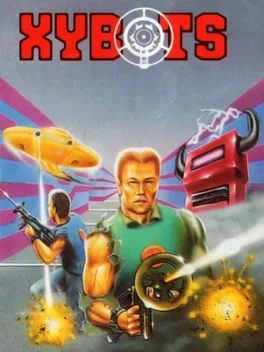
Xybots is a sci-fi shooter with pseudo-3D environments explored from a third-person perspective. The game can be played by one or two players; the two-player mode takes place on a split screen. The hero(es) must move through a series of Gauntlet-style underground mazes, killing the bad guys and collecting health and other bonuses from flying saucers. It's designed to be played co-operatively, although bullets from one player can harm the other.
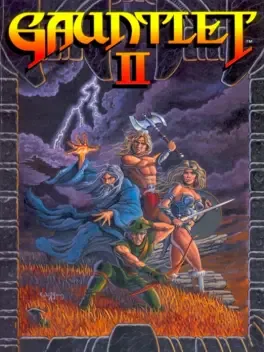
The gameplay is very similar to the original Gauntlet, a topdown dungeon crawl supporting up to four players. The biggest difference from the original game is that players can choose identical classes, instead of being limited to a particular one for each joystick; each player is differentiated by color. Thus, instead of having a "warrior", "wizard", and "valkyrie" (for instance), in Gauntlet II there could be a "red wizard", a "blue elf" and a "green warrior". In addition to the new "class" system, new level designs were added, including the possibility of encountering them in altered ways by having the play-field turned in steps of 90°. Other new features included the enemy "It", which upon contact would make a player "It" and draw all enemies towards him/her. The only way to release this curse is by touching another player or entering the exit, turning any level containing "It" into a fantasy filled game of tag. Other notable additions include the ability to ricochet shots off walls by means of a special pick-up, acid puddles that caused large, predetermined amounts of damage and a large dragon which would occupy multiple squares and require multiple hits to destroy. New level elements were also added, adding more variety to the original game. These included "all walls are invisible", "magic walls" which changed into monsters or items when hit, "stun tiles" which stunned the player, and fake exits. Another challenge in the game is the possibility to find a "secret room". This can be found by completing specific achievements within the level (e.g., "don't be fooled", means that you must find the real exit first). The secret room contains items such as food and magic potions (extra shot power, extra shot speed, extra magic power, extra speed, extra armor and extra fight power). This sequel was also the first to feature what is now known as the Gauntlet theme tune, which resembles a simplified Baroque fugue.
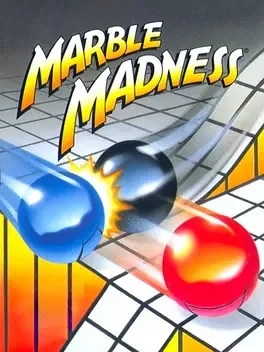
Marble Madness is an isometric platform game in which the player manipulates an onscreen marble from a third-person perspective. The player controls the marble's movements with a trackball, though most home versions use game controllers with directional pads. The aim of the game is for the player to complete six maze-like, isometric race courses before a set amount of time expires. When a player completes a race, the remaining time is added to the next race's allotted time. The game also allows two players to compete against each other. Courses are populated with various objects and enemies designed to obstruct the player. As the game progresses, the courses become increasingly difficult and introduce more enemies and obstacles. Each course has a distinct visual theme. For example, the first race, titled "Practice", is a simple course that is much shorter than the others, while the fifth race, named "Silly", features polka-dot patterns and is oriented in a direction opposite from the other courses
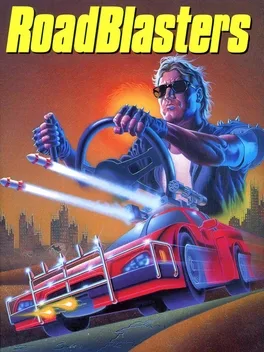
The objective of the game is to complete all 50 rallies without running out of fuel. There is no limit to how many vehicles a player can receive to complete a rally, as long as they have fuel. However, the destruction of the vehicle will subtract a small amount from the player's fuel tank. In the arcade, Genesis and Lynx versions, players could start the game at a higher rally, with additional opportunities to jump several levels from time to time. Players can continue their game from where they left off; however, the player has only one chance to complete the 50th and final rally. For completing the final rally the player gets one million points as a bonus. Players can get fuel in four ways: green globes, red globes, a checkpoint, and the rally point.
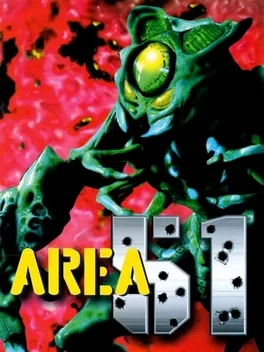
Area 51 is a light gun arcade game released by Atari Games. It takes its name from the Area 51 military facility.
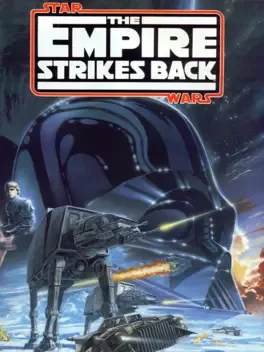
Now transform your Star Wars games into a new adventure. The action is intensified in this conversion kit for your original Star Wars cabinet from Atari. Take the battle to the frozen planet of Hoth as Luke and his rebel squadron takes down the Empire's ambush assault!
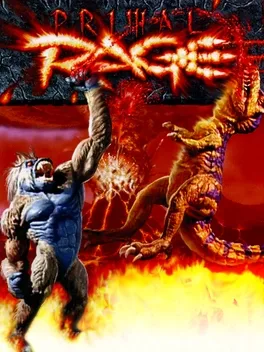
A meteor struck the Earth, and caused great chaos. Seven gods from ancient times awoke, and are now attempting to take control of the post-apocalyptic world. Primal Rage is a one-on-one fighting game featuring dinosaurs and giant apes as the fighters. The graphics are done with digitized stop-motion animation. Gameplay is similar to Mortal Kombat in that it is viewed from a side perspective, and features deadly finishing moves at the end of the match.
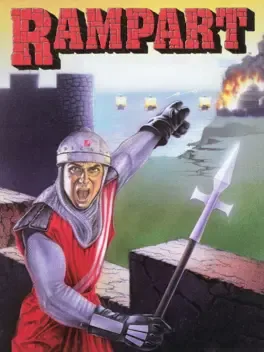
Rampart is a game combining strategy and artillery action. Build your castle from Tetris-style pieces, place your cannons, bombard the enemy, try to repair, do it all over again. The original arcade release has a single-player and a two-player mode; later revisions incorporate three-player gameplay.
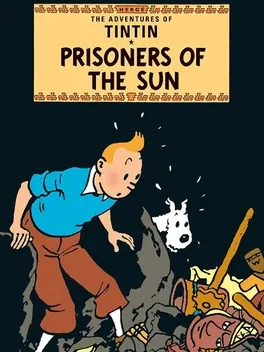
The Adventures of Tintin: Prisoners of the Sun is an Action game, developed by Infogrames and published by Atari, which was released in Europe in 1997.
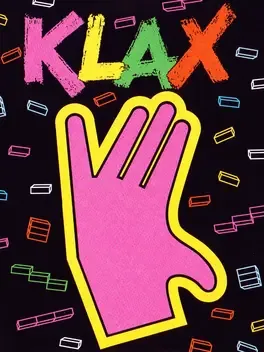
Klax is a 1989 computer puzzle game designed by Dave Akers and Mark Stephen Pierce. The object is to line up colored blocks into rows of similar colors to make them disappear, to which the object of Columns is similar. Atari Games originally released it as a coin-op follow up to Tetris, about which they were tangled in a legal dispute at the time.
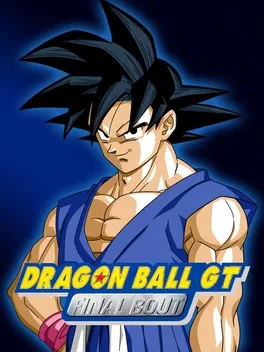
After achieving cult hit status around the globe, Dragon Ball GT has finally arrived in the U.S. This polygon rendered fighting game features 10 of the best warriors from the animated television series going head-to-head in a no-holds-barred tournament. Each player has devastating finishing moves, including the infamous "Meteor Smash", which can be countered by an opponent, resulting in some of the most incredible power struggles you'll ever see! There are also 8 playable hidden characters and a practice mode that lets you build up the skills of each fighter. Now, you can find out what gamers around the world already know -- Dragon Ball GT is the ultimate fighting game!
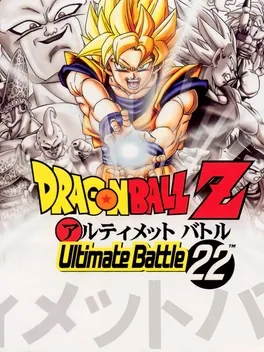
Dragon Ball Z: Ultimate Battle 22 gives you 22 playable characters, each with an arsenal of unique moves, kicks, spins, slashes, and specialties, an additional five bonus characters can be unlocked with one command, including Master Roshi, Kid Goku, Super Saiyan 3 Goku, Vegeto, and Mr. Hercule Satan.

Race Drivin' is a sequel to the arcade driving simulator Hard Drivin'. Game play is similar to the first game. The player must complete laps around the race track before a timer expires. There are several checkpoints around the track which increase player's time as he passes.
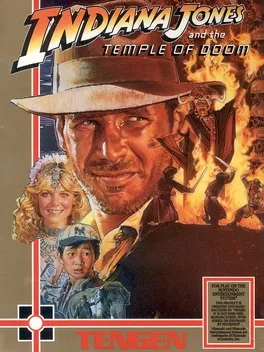
As Indy, the player must complete several cycles of the following three types of levels: 1.Mine level: Whip your way through a mine in order to free children that are held captive. Use your whip to swing across chasms, climb ladders, ride along conveyor belts and defend yourself against attacks from Thuggee guards, bats, snakes and the fireball-throwing Mola ram. Escape with the mine cart after you've freed all children. 2.Mine cart level: Pick the right route through a network of tracks while riding in a mine cart. Avoid potholes, broken tracks & guards in carts and safely reach the end of the track. 3.Temple level: Make your way to the altar and grab the Sankara stone while Mola Ram, bats and Thuggee guards attack you. Watch out for that lava.

Paperboy is a 1985 arcade game by Atari Games originally developed in 1984 . The players take the role of a paperboy who delivers newspapers along a suburban street on his bicycle. The game was ported to numerous video game consoles and personal computers. Paperboy was innovative for its theme and novel controls. The player controls a paperboy on a bicycle delivering newspapers along a suburban street which is displayed in a cabinet perspective (or oblique projection) view. The player attempts to deliver a week of daily newspapers to subscribing customers, attempts to vandalize non-subscribers' homes and must avoid hazards along the street. Subscribers are lost by missing a delivery or damaging a subscriber's house.
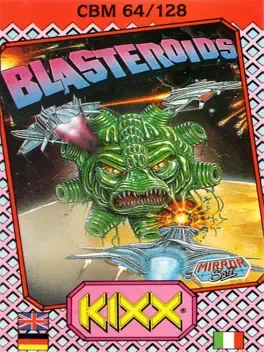
The Player controls a spaceship viewed from "above" in a 2D representation of space, by rotating the ship, and using thrust to give the ship momentum. To slow down or completely stop moving, the player has to rotate the ship to face the direction it came from, and generate the right amount of thrust to nullify its momentum. The ship has a limited amount of fuel to generate thrust with. This fuel comes in the form of "Energy" that is also used for the ship's Shields which protect it against collisions and enemy fire. Once all Energy is gone, the player's ship is destroyed. The ship can shoot to destroy asteroids and enemy ships. The ship can also be transformed at will into 3 different versions, namely the "Speeder", the fastest version, the "Fighter", which has the most firepower, and the "Warrior", which has extra armour.
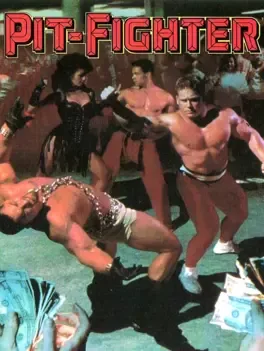
The gameplay is similar to Taito's Violence Fight and SNK's Street Smart. The player must jump, punch, and kick their opponent until his/her energy runs out. If the player presses all three of the buttons at a time, the character will perform a "super move". The player begins Pit-Fighter by choosing one of the three playable characters, who all have different moves, speed, and power. In the player select screen in the arcade version, each player has a color to select the fighters with: for player one it's blue, for player two it's red and for player three it's yellow. As many as three people can play at a time, but there will be extra opponents to fight during any of this game's 15 different matches. Every third fight is a bonus round known as a Grudge Match.[1] In a Grudge Match, the player must fight against a CPU controlled clone of his or her fighter (if playing alone) or the other players in a multiplayer game. Getting knocked down three times eliminates a player from the Grudge Match, the winner is the last man standing. Losing the Grudge Match does not eliminate a player, but the winner gets bonus money. The final battle, the "Championship Match", is between the player and the mysterious entity that taunts between matches every once in a while, the Masked Warrior. If more than one person is playing the game before this match, they must fight each other to the death until only one becomes victorious and can fight him. Sometimes during matches the player will come across foreign objects such as knives, crates, sticks, motorcycles, and bar stools that can be thrown at you or your opponent. The player may also come across a power-up known as the "power pill". If the player or the opponent grab this item, one will become temporarily stronger and take less damage from hits. At times even the crowd will interfere in the fights. Two characters, known as Knife Man (Milt Loper) and Knife Woman (Dianne Bertucci), will come out of the crowd and stab the player with their daggers. The player can take these nuisances out with one hit. Sometimes there is also a fat bearded man with a stick. If the player knocks him down, the player can take the stick and use it against the current opponent. The audience will also push any fighter that ends up among them, and stays there more than a few seconds. They will be forced back into the fighting area.
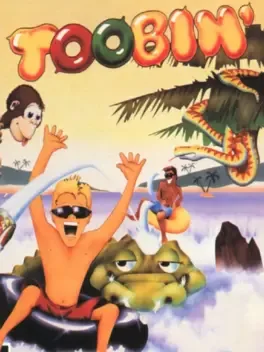
Toobin' involves Biff and Jet racing their way down the rapids of a river, riding on tires. You rotate your tyre left or right, and drift as the current sends you, making sure to avoid the banks of the river, and the dividing lines in the middle. Hazards include crocodiles, stray logs and branches, and fishermen - you are armed with a limited supply of tin cans to take care of these. There are gates to slide through on the way down - these give you a points bonus. Each level has a strict time limit to adhere to, although there's a kickin' party at the end if you succeed.